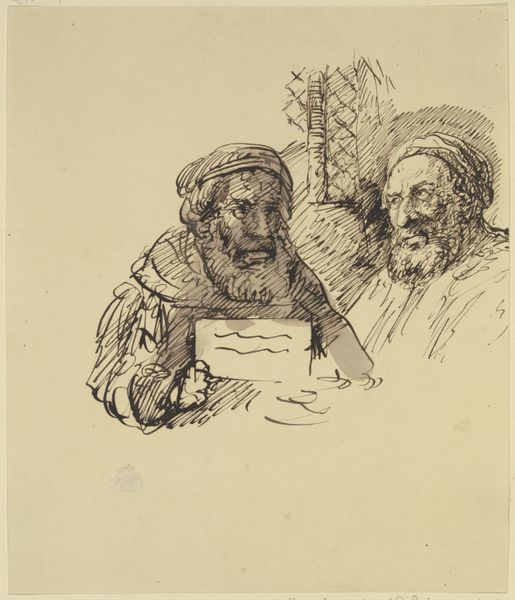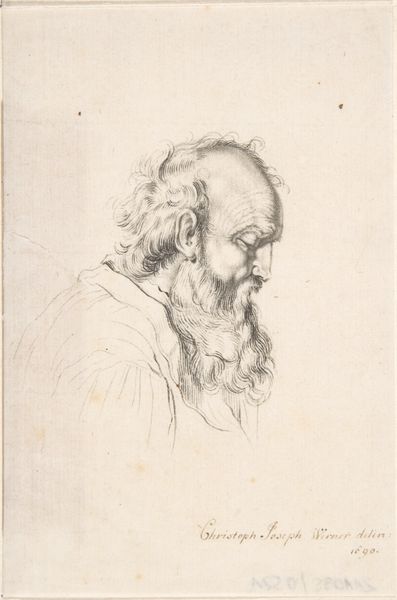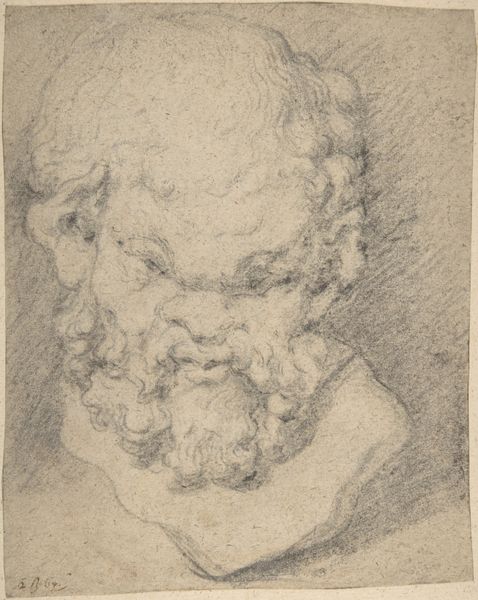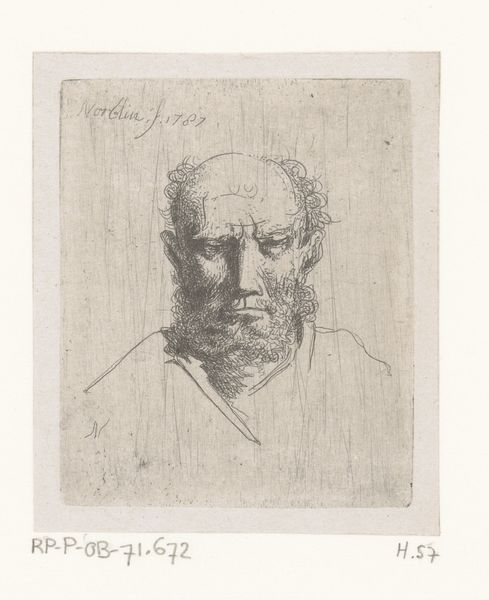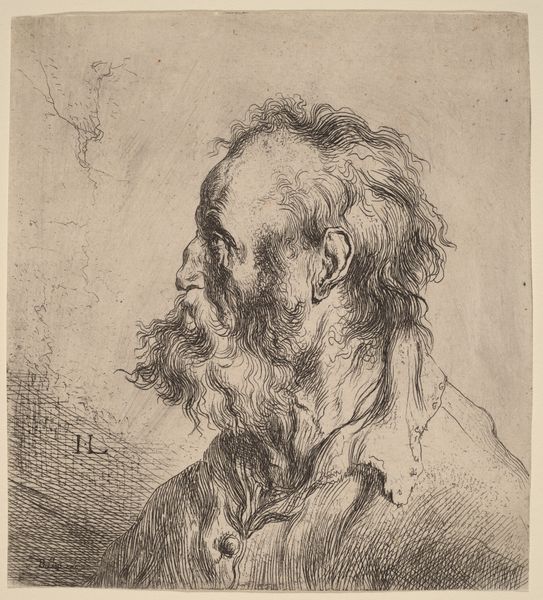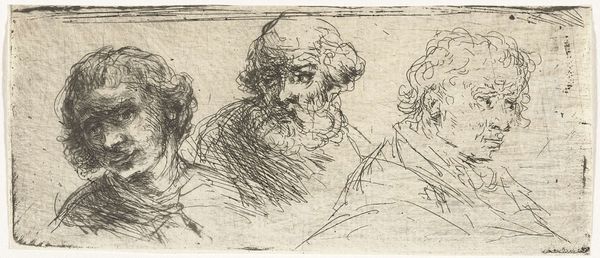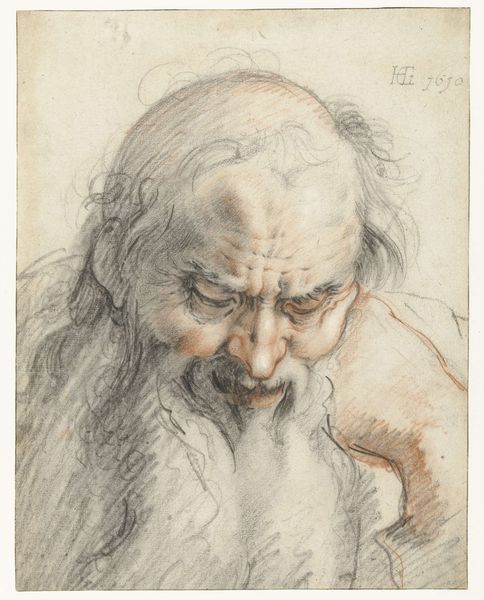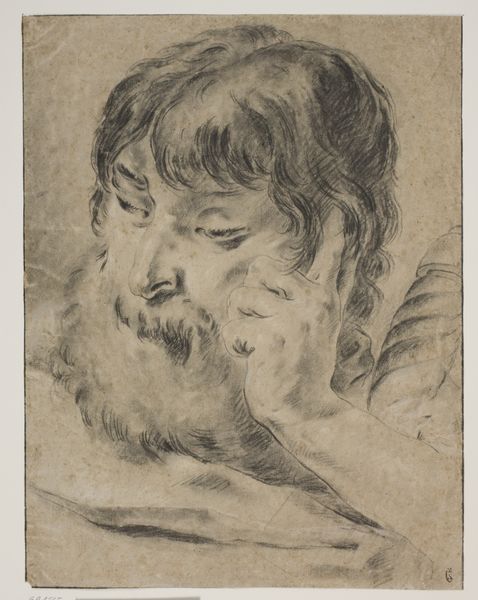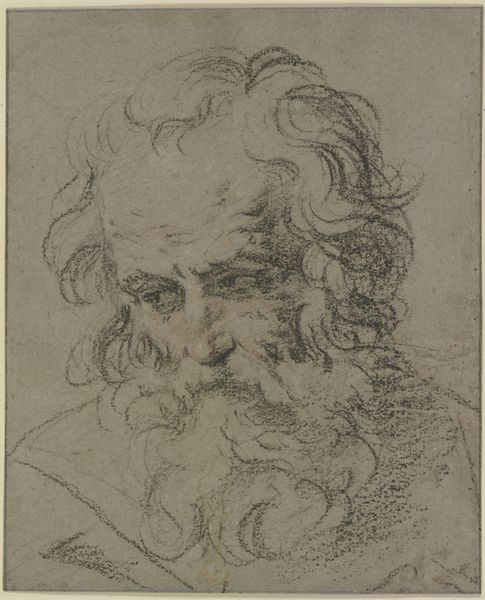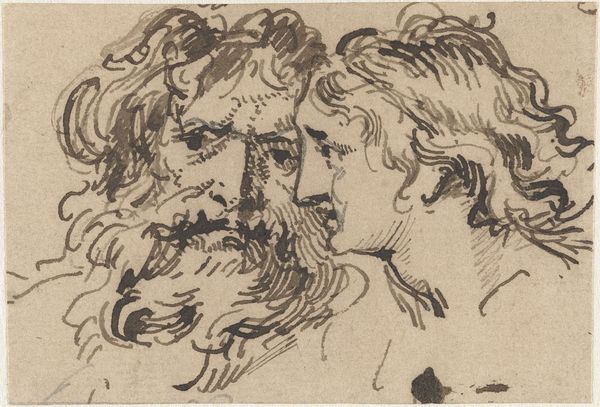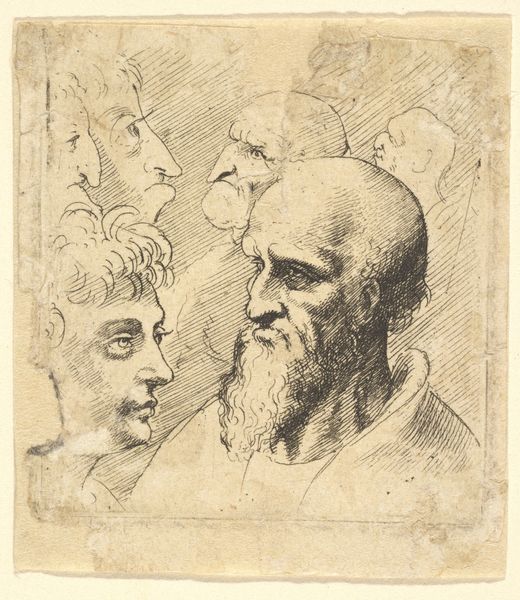
drawing, ink, pen
#
portrait
#
pencil drawn
#
drawing
#
figuration
#
ink
#
romanticism
#
pen
#
portrait drawing
#
academic-art
Dimensions: Sheet: 11 1/2 × 9 1/4 in. (29.2 × 23.5 cm) Mount: 12 15/16 × 13 5/8 in. (32.8 × 34.6 cm)
Copyright: Public Domain
Curator: Von Holst’s “Two Male Heads,” dating from the 1830s or 40s, is executed in pen and ink. What’s your immediate take on this stark portrait, Editor? Editor: Raw. Stark is a great word—it evokes a primal energy. The visible strokes, the tight hatching, the intense stare of the primary figure. It feels like an unmasking, doesn’t it? Curator: Absolutely. Considering it through a socio-political lens, I see this as potentially confronting archetypes of masculinity—the stoic versus the vulnerable. Notice how the angry visage in the foreground overshadows the softer, almost mournful face behind. Is this a study in contrasting masculinities of the era? Editor: I'm drawn to that contrast, certainly. Anger versus melancholy. But it’s the symbolism of the shadow figure that resonates with me most. It speaks to repressed emotion, maybe even the unseen consequences of male aggression during that period. It makes one think about inherited trauma. Curator: That interplay between personal and collective suffering is important. We also need to recognize Von Holst’s influences. As a Romantic-era artist steeped in literature, what role did visual imagery play in constructing societal ideas about gender and emotion, for example? Editor: Visual symbols absolutely solidified cultural narratives. I find the academic approach striking too—the way he renders musculature with such fine, deliberate lines. Those very lines become part of a lexicon, of conveying cultural meaning across time. It's a sort of visual shorthand for emotional archetypes, like anger or anguish, inherited from earlier masters. Curator: Von Holst likely intended these figures to stir very particular emotions tied to his historical and artistic environment, using symbols accessible to his time. These symbols may still hold significant impact, but perhaps evoke different responses in a contemporary social landscape. Editor: Ultimately, it asks us to reflect on those received symbols, to unpack their persistent power on the psychological level. Curator: It reminds us that art history isn’t just about aesthetics, but about grappling with societal inheritance through art. Editor: Yes—how these symbols live and breathe within us even now.
Comments
No comments
Be the first to comment and join the conversation on the ultimate creative platform.

